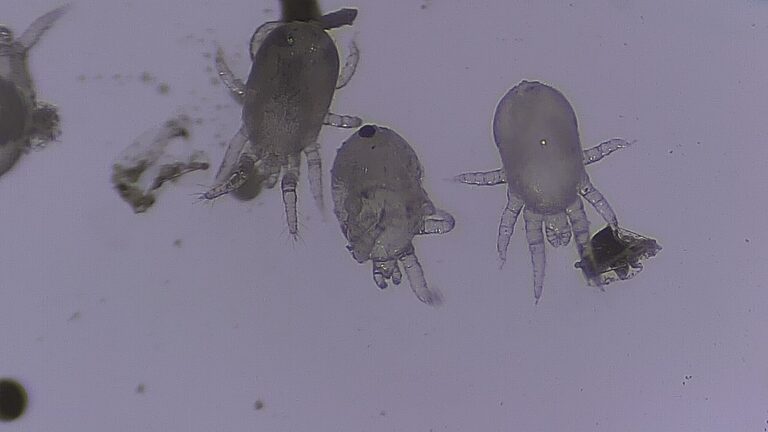Poultry producers are being reminded that red mite monitoring should remain a priority over the winter months to reduce the threat of poor flock health and production losses.
“Generally, as the weather turns cooler, red mite activity will decline,” said Wesley Thorne, key account manager at MSD Animal Health UK.
However, this year we have experienced an unseasonably warm autumn which has potentially caused red mite populations to remain high in poultry houses later into the year than we would expect.
“Because of this, it’s crucial producers continue to routinely monitor for the pest throughout this autumn and winter to ensure red mite levels do not exceed the recommended treatment threshold,” he said
Visual assessment of mite activity can be a challenge for producers as they tend to only come out to feed when the house lights are off. To accurately monitor nocturnal mite activity, it is recommended that simple traps are strategically placed inside the shed to help quantify the threat to flocks.
“It’s possible to create your own red mite traps,” said Thorne.
“Start with simple plastic tubes that are approximately 15mm wide by 50mm long and then roll up and insert some appropriately sized corrugated cardboard into the tubes – the corrugations create the ideal environment for red mite to lay eggs.
“Place the traps along the pathway red mite will travel at night to feed on the birds. Mite will feed and then enter the cardboard traps ‘on their way home’, as it’s a more convenient location to shelter,” he said.
Producers are advised to leave these traps out for two days to provide the mites sufficient opportunity to discover them.
“After 48 hours, place the traps in individual bags prior to counting. If you find over 100 mites in one trap, this is considered a moderate infestation, whereas more than 250 mites in one trap would be classed as a high infestation which is when treatment would be recommended.
“If producers aren’t keeping an eye on red mite levels in their poultry houses, by the time an infestation is noticeable, it’s likely flock productivity and welfare will already be suffering. Unseasonably warm weather has heightened the risk of infestation this autumn, so it’s crucial to stay on top of the threat,” added Thorne.


